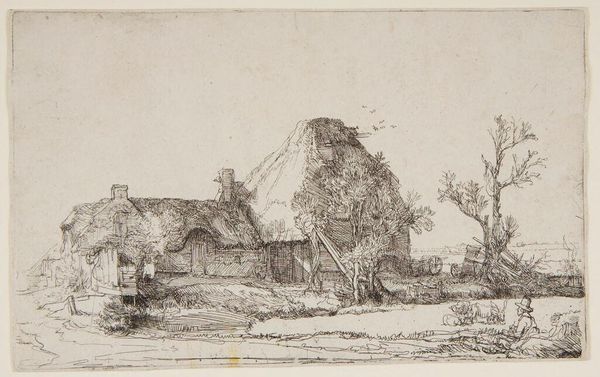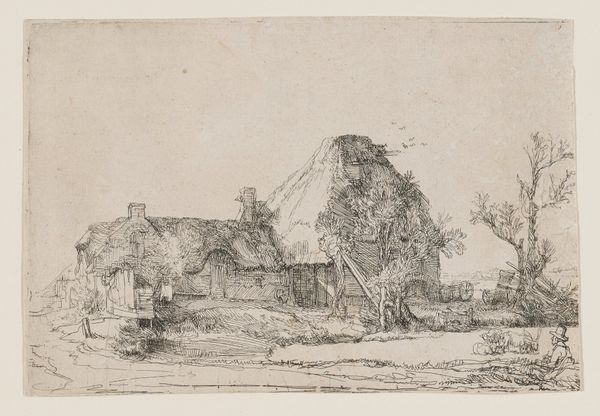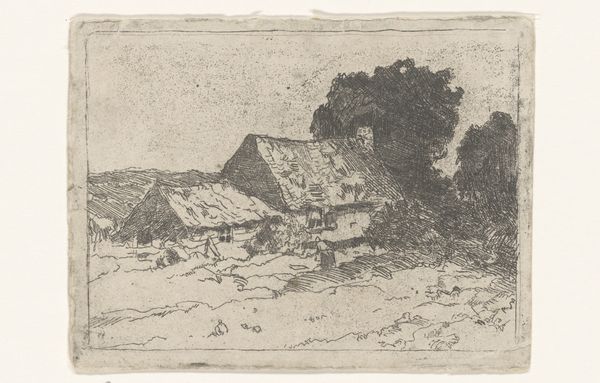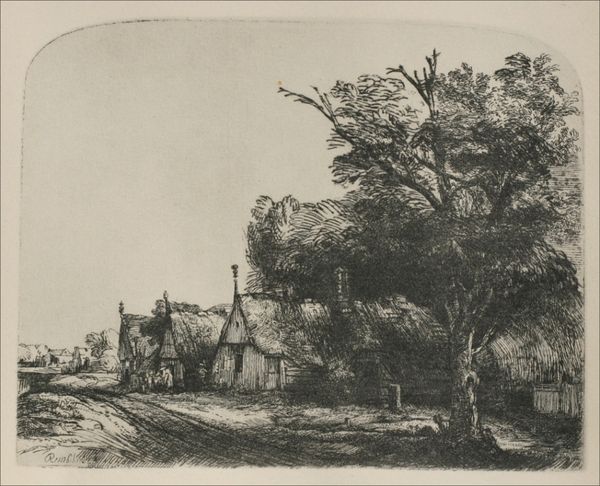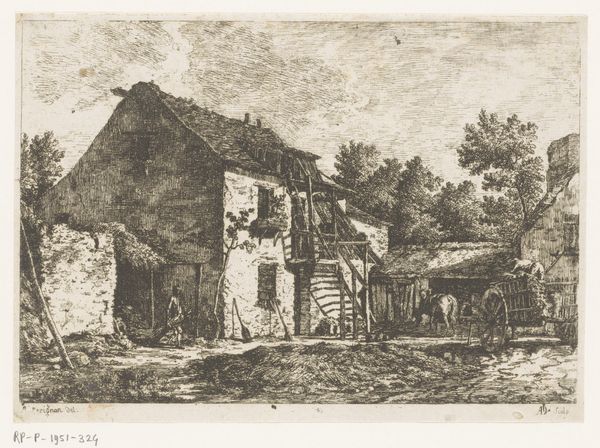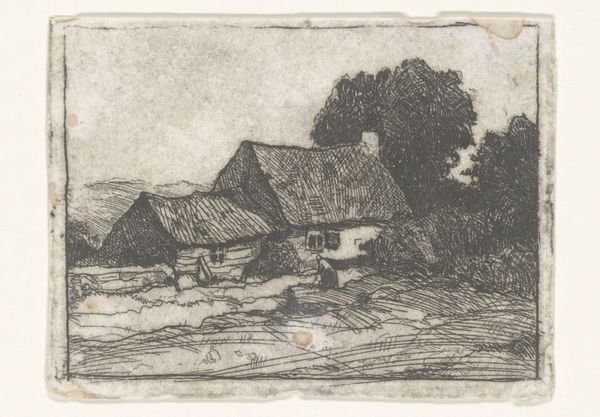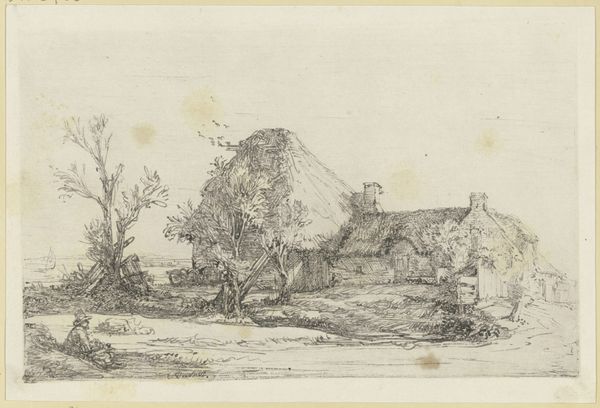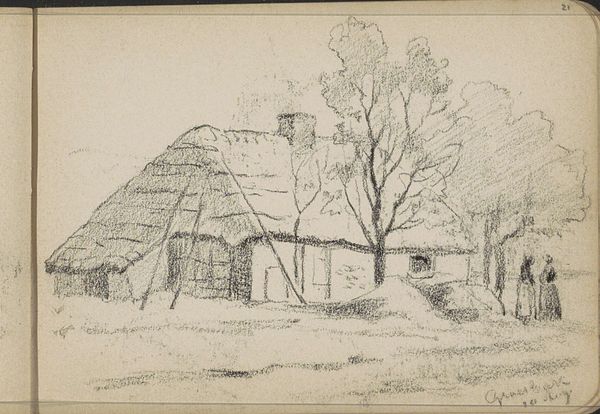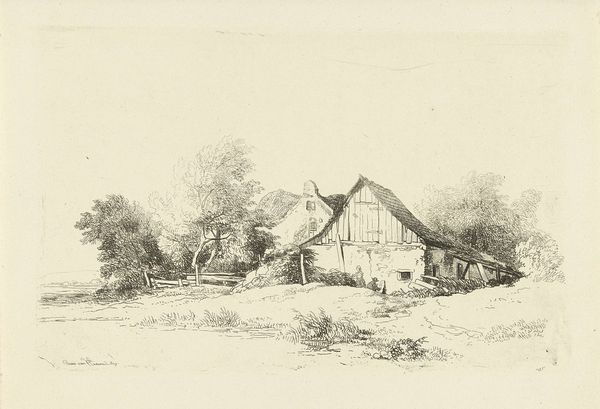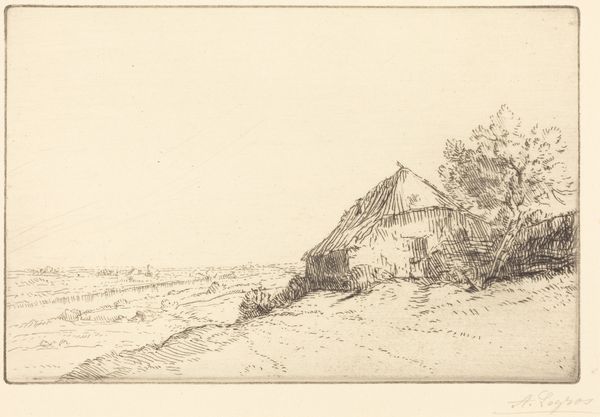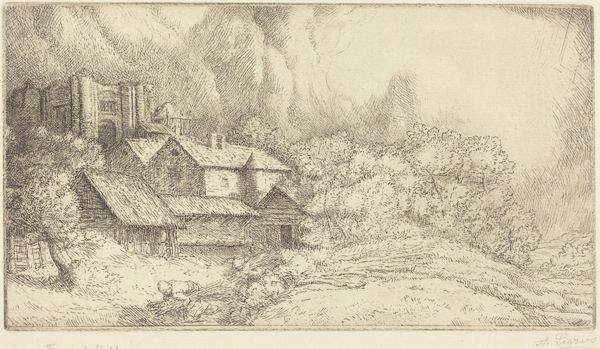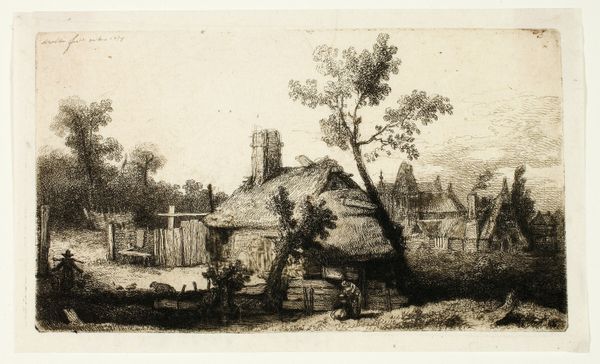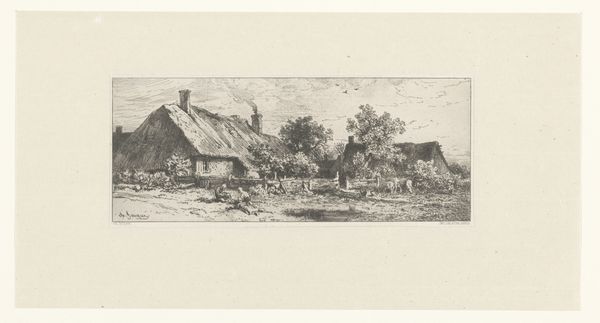
etching
baroque
dutch-golden-age
etching
landscape
etching
figuration
line
realism
Dimensions: 13 x 21 cm
Copyright: Public domain
Editor: Here we have Rembrandt van Rijn’s “Landscape with a Man Sketching a Scene,” created in 1645 using etching. It’s such an intricate work; the details in the thatched roofs are incredible! What strikes me is its quiet intimacy. What do you see in this piece? Curator: That quiet intimacy is key. Looking through a contemporary lens, this seemingly simple landscape unveils a complex negotiation of class, labor, and representation in 17th-century Holland. Consider who is typically afforded the time and resources to engage in artistic pursuits. Rembrandt, positioning an artist *within* the landscape, complicates our understanding of labor. What does it mean to represent labor through leisure? Editor: So, you’re saying the act of sketching itself becomes a subject, not just the landscape? It makes me think about who *isn’t* in the picture – the farm workers. Curator: Exactly. The picturesque rural scene, in its apparent neutrality, actually masks the labor that sustains it. And by immortalizing this “scene,” what power dynamic is he enacting? How might the working class perceive the man sketching versus their reality? It’s important to note the rise of the Dutch merchant class and their patronage of art. These landscapes often sanitized the realities of rural life. Does that shift how you see it? Editor: Absolutely! Knowing the social context casts a new light on the etching. It is more than just a pretty landscape; it’s a statement about class and artistic privilege during the Dutch Golden Age. Curator: Precisely. Art always exists within, and responds to, a specific sociopolitical moment. Examining this intersection helps us develop a critical approach to reading imagery – even seemingly "neutral" landscapes. Editor: I'll never look at a landscape the same way again! I am thankful for you showing the historical importance and providing insights to really understand more about art's intersectionality in our world.
Comments
No comments
Be the first to comment and join the conversation on the ultimate creative platform.
